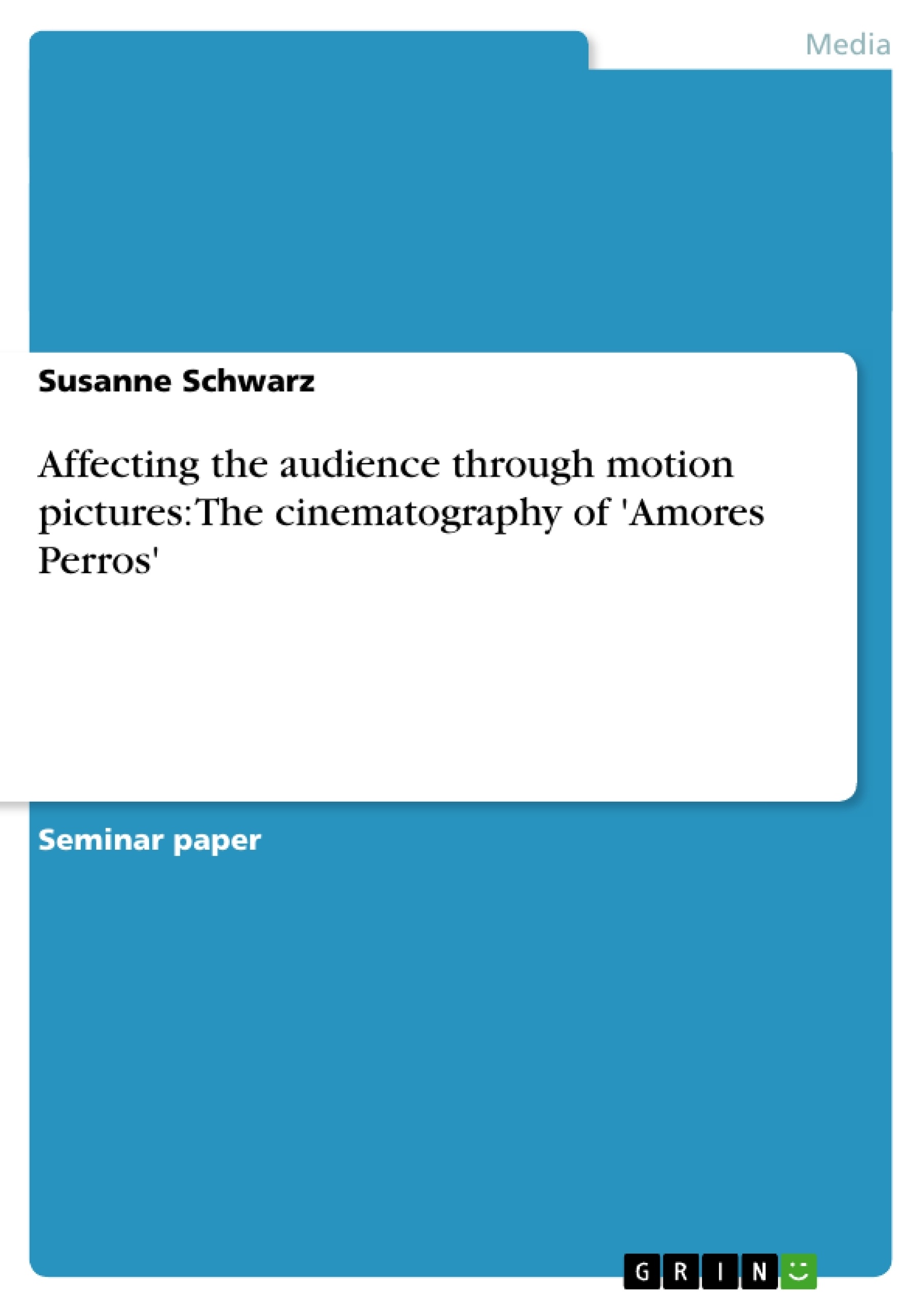Amores Perros (2000) is the first feature film of Mexican Filmmaker Alejandro González Iñárritu. Released in 2000 at the Cannes Film Festival, the movie won the Prize of the Critic's Week at Cannes. It was the first Mexican film after 25 years that entered an Oscar competition. By referring to specialist magazine Cine XS (Flores-Durán and Pedroza, 2000) Paul Julian Smith explains that ‘Amores Perros is representative of a ‘new trend’ in Mexican cinema’ (Smith, 2003, p. 25). The film not only won a lot of prizes at international film festivals, it was also very successful at the box offices. It earned $ 10 million in Mexico, $ 5 million in the US and $20 million worldwide (Smith, 2003, p. 13). ‘The critical and commercial success of González Iñárritu’s film comes at a time when the Mexican film industry appears to be going through its worst period since the early 1930s’ (D’Lugo, 2003, p. 221). But what makes this film so successful? The brilliant narration, the strong soundtrack, the outstanding cinematography and special marketing strategies could be factors for its success. The cinematic and editing techniques used in this movie are very different from films of former Latin American filmmakers. In this essay, I would like to concentrate on the cinematography of Amores Perros and analyse how it creates meaning and supports the story and the characters. I will start with general information about the movie and sum up the plot very briefly. After that, I will begin the analysis of the cinematography and give some background information about the production. Firstly, I want to give some general information about the specific cinematographic techniques used in Amores Perros and then I would like to analyse several sequences more properly. The opening sequence will be analysed accurately, then I concentrate on several key-scenes.
Table of Contents
- Introduction
- Plot
- The shooting
Objectives and Key Themes
This essay analyzes the cinematography of the film Amores Perros, examining how it contributes to meaning and supports the story and its characters. The essay will explore the techniques used, including the bleach-bypass process, hand-held camerawork, and specific film stock choices. The essay also aims to demonstrate how the film’s success is linked to its innovative cinematography and the impact it has had on the Mexican film industry.
- The impact of cinematography on narrative and character development
- The use of unconventional cinematic techniques and their impact on audience experience
- The role of the bleach-bypass process in creating a distinct visual style
- The relationship between camerawork and the film's thematic concerns
- The influence of Amores Perros on the Mexican film industry
Chapter Summaries
The Introduction establishes the context for the essay, discussing the film’s critical and commercial success, its significance in reviving the Mexican film industry, and its unique approach to storytelling. The essay then provides a brief overview of the film's plot, introducing the three interwoven narratives: “Octavio and Susana,” “Valeria and Daniel,” and “El Chivo and Maru.”
The section on “The shooting” details the film's production process, highlighting the use of documentary-style camerawork, on-location shooting, and the bleach-bypass process to achieve a distinct visual style. The essay further explores how the camerawork and film stock choices contribute to the film's realism and urgency, while also creating unique visual identities for each of the three storylines.
The final section of the essay will likely focus on a detailed analysis of specific scenes and sequences, examining how the cinematography enhances the storytelling and character development, as well as highlighting the film's overall impact on viewers.
Keywords
Amores Perros, cinematography, Mexican cinema, bleach-bypass process, hand-held camerawork, film stock, documentary style, visual style, narrative, character development, audience experience, realism, urgency, thematic concerns, film industry.
- Quote paper
- Susanne Schwarz (Author), 2009, Affecting the audience through motion pictures: The cinematography of 'Amores Perros', Munich, GRIN Verlag, https://www.grin.com/document/136794




